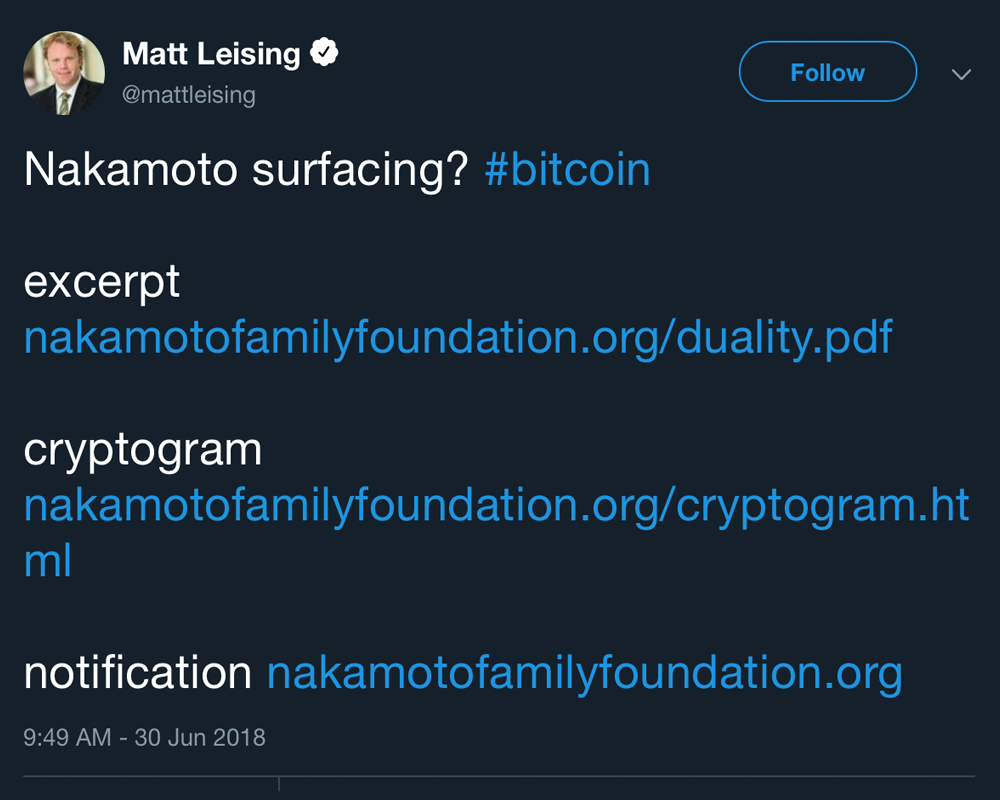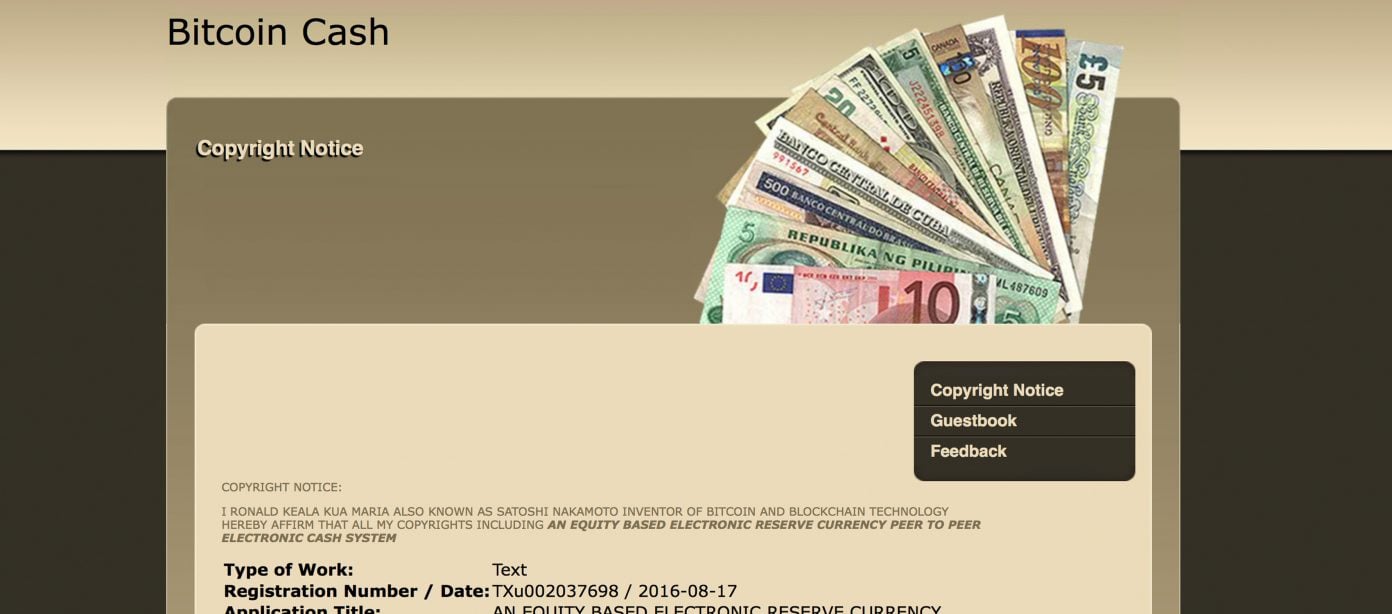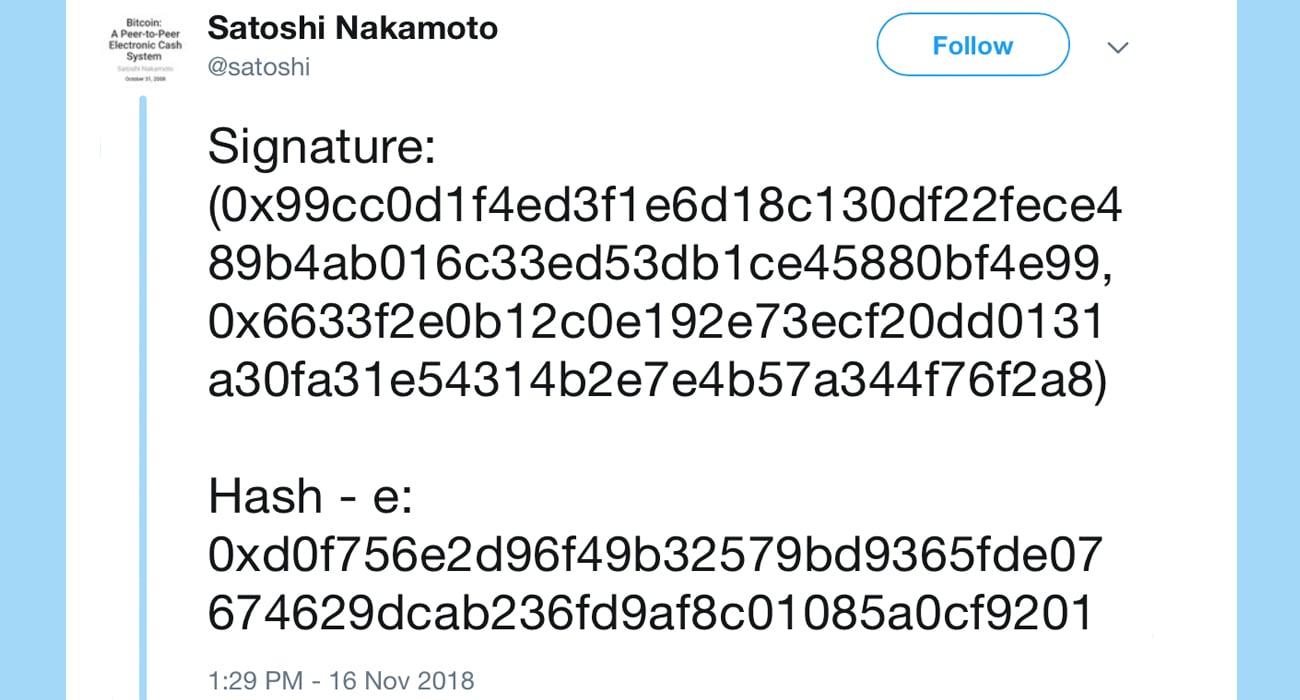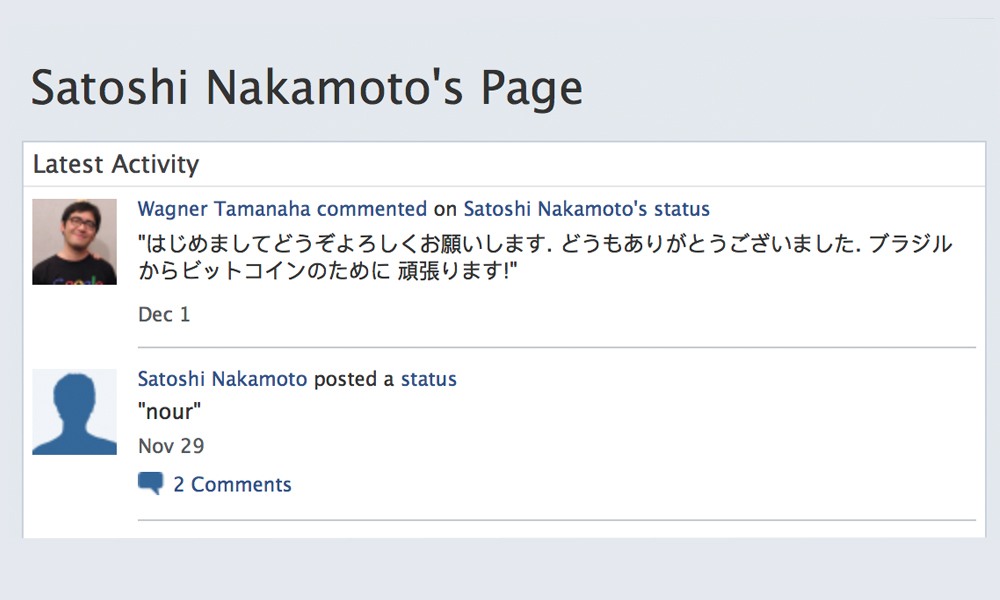Bitcoin has now died 319 times according to Bitcoin Obituaries, but like a B-movie zombie it just won’t stay down. To date, no one has succeeded in administering the fatal double tap, and not for lack of trying. Nine years on, bitcoin is stronger and healthier than ever, with a thriving ecosystem of projects under development, from sidechains to custodial and layer two scaling solutions. Only the brave or the foolish would write off bitcoin in 2018, and yet that’s exactly what so-called experts keep doing. “I thought we’d finally get rid of bitcoin,” grumbled John Crudele in the New York Post. He’s been banging the same drum for four years. “But the fake “currency,” which I like to call bitcon, just won’t fade away…Even at $6,600, bitcoin is still worth 70 percent less than it was at the beginning of the year.” He finished: I use the term “worth” cautiously because bitcoin is really worth nothing, since it’s backed by nothing or no one. It’s a confidence game that has value only because people are convincing other people that it’s worth something. Got it! Ponzi scheme. Confidence game. Fraud. Anyway, bitcoin is headed for a value of zilch. It’s only a matter of when. bitcoin bitcoin bitcoin bitcoin bitcoin bitcoin bitcoin bitcoin bitcoin bitcoin bitcoin bitcoin bitcoin bitcoin bitcoin bitcoin bitcoin bitcoin finance finance finance finance finance finance finance finance finance finance finance finance finance finance finance finance finance finance business business business business business business business business business business business business business business business business Community sites Community sites Community sites Community sites Community sites Community sites Community sites Community sites Community sites Community sites Community sites Community sites Community sites Community sites Community sites Community sites Community sites Community sites Community sites Community sites Community sites Predicting Bitcoin to Go to Zero Will Send Your Reputation to Zero The Lost Art of Googling Bitcoin isn’t complicated. Merkle roots and block header pruning and UTXOs, sure, that stuff’s too complicated for your average MSM journo. But understanding bitcoin at its most basic level requires nothing more than an ability to Google. Another serving of FUD this week came from a research paper that the Bank of Finland released. The Great Illusion of Cryptocurrencies includes such observations as “cryptocurrencies are not real currencies but instead accounting systems for non-existent assets” and “For all intents and purposes, that ledger is a centralised ledger. The fact that there are multiple synchronised copies of it, distributed across a network, is irrelevant, as each one has the same data.” Predicting Bitcoin to Go to Zero Will Send Your Reputation to Zero The UK Media Weigh In Around the same time that the New York Post’s Crudele was foaming over his laptop, British tabloid The Sun was also doling out misinformation. “BUBBLE TROUBLE How Bitcoin bubble burst as cryptocurrency loses 70% value and 800 digital currencies now defunct” screeched the headline. “FEARS are growing that the cyptocurrency [sic] bubble is about to burst after it emerged more than 800 digital coins are now defunct,” read the article, conflating dead shitcoins with BTC for no apparent reason. The Independent is meant to be more reputable than The Sun, but the British media outlet also took aim at bitcoin this week. Like The Sun, its analysis was hopelessly off the mark. “Bitcoin has fallen to its lowest point since November and will probably be totally wiped out” ran the headline by associate editor Hamish McRae, “one of the country’s most respected financial journalists and commentators”. Evidently in the mood for serving some WTF with his FUD, McRae’s byline read: “Will investors’ support for bitcoin continue? The trouble is that we don’t know who owns it. A huge amount of energy has gone into uncovering ownership but most names remain concealed.” Somewhere in the midst of the rambling screed, the journalist then floated the idea that “By looking at IP addresses, it is clear that [bitcoin] ownership is very concentrated.” Predicting Bitcoin to Go to Zero Will Send Your Reputation to Zero The Independent’s financial expert ended: “The BIS [Bank for International Settlements] thinks that the decentralised nature of cryptocurrencies is a weakness rather than a strength.” Well fancy that. “My instinct is that these cryptocurrencies will disappear in a puff of smoke. I just hope too many people are not too damaged when it happens.” The thing about predicting bitcoin to go to zero is you can never be proven wrong. You can also never be taken seriously again.
Bitcoin has now died 319 times according to Bitcoin Obituaries, but like a B-movie zombie it just won’t stay down. To date, no one has succeeded in administering the fatal double tap, and not for lack of trying. Nine years on, bitcoin is stronger and healthier than ever, with a thriving ecosystem of projects under development, from sidechains to custodial and layer two scaling solutions. Only the brave or the foolish would write off bitcoin in 2018, and yet that’s exactly what so-called experts keep doing. “I thought we’d finally get rid of bitcoin,” grumbled John Crudele in the New York Post. He’s been banging the same drum for four years. “But the fake “currency,” which I like to call bitcon, just won’t fade away…Even at $6,600, bitcoin is still worth 70 percent less than it was at the beginning of the year.” He finished: I use the term “worth” cautiously because bitcoin is really worth nothing, since it’s backed by nothing or no one. It’s a confidence game that has value only because people are convincing other people that it’s worth something. Got it! Ponzi scheme. Confidence game. Fraud. Anyway, bitcoin is headed for a value of zilch. It’s only a matter of when. bitcoin bitcoin bitcoin bitcoin bitcoin bitcoin bitcoin bitcoin bitcoin bitcoin bitcoin bitcoin bitcoin bitcoin bitcoin bitcoin bitcoin bitcoin finance finance finance finance finance finance finance finance finance finance finance finance finance finance finance finance finance finance business business business business business business business business business business business business business business business business Community sites Community sites Community sites Community sites Community sites Community sites Community sites Community sites Community sites Community sites Community sites Community sites Community sites Community sites Community sites Community sites Community sites Community sites Community sites Community sites Community sites Predicting Bitcoin to Go to Zero Will Send Your Reputation to Zero The Lost Art of Googling Bitcoin isn’t complicated. Merkle roots and block header pruning and UTXOs, sure, that stuff’s too complicated for your average MSM journo. But understanding bitcoin at its most basic level requires nothing more than an ability to Google. Another serving of FUD this week came from a research paper that the Bank of Finland released. The Great Illusion of Cryptocurrencies includes such observations as “cryptocurrencies are not real currencies but instead accounting systems for non-existent assets” and “For all intents and purposes, that ledger is a centralised ledger. The fact that there are multiple synchronised copies of it, distributed across a network, is irrelevant, as each one has the same data.” Predicting Bitcoin to Go to Zero Will Send Your Reputation to Zero The UK Media Weigh In Around the same time that the New York Post’s Crudele was foaming over his laptop, British tabloid The Sun was also doling out misinformation. “BUBBLE TROUBLE How Bitcoin bubble burst as cryptocurrency loses 70% value and 800 digital currencies now defunct” screeched the headline. “FEARS are growing that the cyptocurrency [sic] bubble is about to burst after it emerged more than 800 digital coins are now defunct,” read the article, conflating dead shitcoins with BTC for no apparent reason. The Independent is meant to be more reputable than The Sun, but the British media outlet also took aim at bitcoin this week. Like The Sun, its analysis was hopelessly off the mark. “Bitcoin has fallen to its lowest point since November and will probably be totally wiped out” ran the headline by associate editor Hamish McRae, “one of the country’s most respected financial journalists and commentators”. Evidently in the mood for serving some WTF with his FUD, McRae’s byline read: “Will investors’ support for bitcoin continue? The trouble is that we don’t know who owns it. A huge amount of energy has gone into uncovering ownership but most names remain concealed.” Somewhere in the midst of the rambling screed, the journalist then floated the idea that “By looking at IP addresses, it is clear that [bitcoin] ownership is very concentrated.” Predicting Bitcoin to Go to Zero Will Send Your Reputation to Zero The Independent’s financial expert ended: “The BIS [Bank for International Settlements] thinks that the decentralised nature of cryptocurrencies is a weakness rather than a strength.” Well fancy that. “My instinct is that these cryptocurrencies will disappear in a puff of smoke. I just hope too many people are not too damaged when it happens.” The thing about predicting bitcoin to go to zero is you can never be proven wrong. You can also never be taken seriously again.









